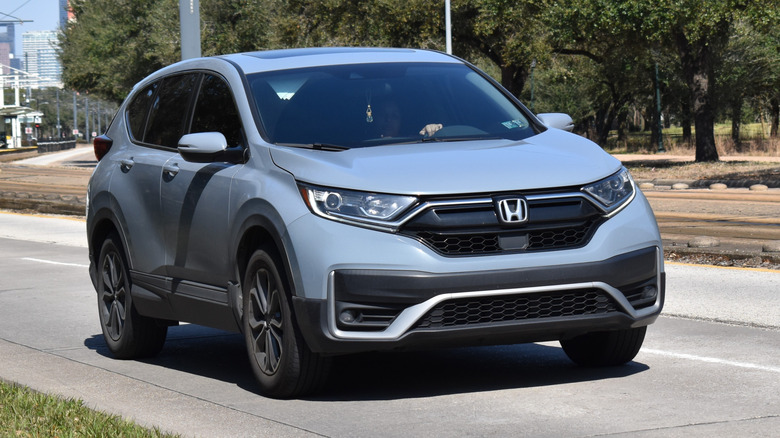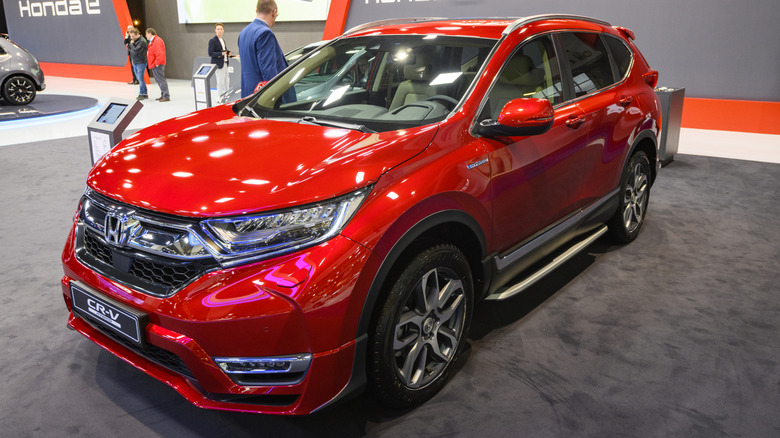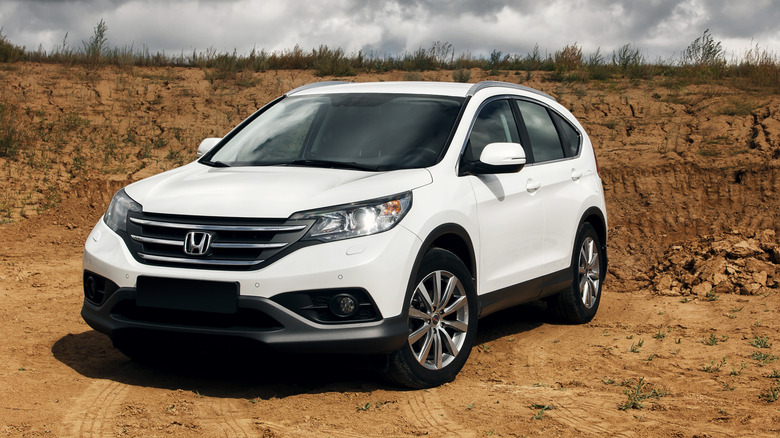The Best Honda CR-V Model Years To Buy (And Which Ones To Avoid)
Spend time on the highway, in a school pick-up line, or in a shopping center parking lot, and it's hard not to see a Honda CR-V. Debuting for the 1997 model year, this compact crossover has been among Honda's most successful models and one of the best-selling vehicles on the road. Yet, popularity doesn't always translate into reliability. The truth is that some CR-V years are better than others — a fact confirmed by owner feedback and government data. For shoppers considering buying a used CR-V, it's essential to know which model years are more dependable, such as those from 2005, 2006, 2009, and 2020. You should also know the CR-Vs with reliability red flags, like the 2007, 2011, 2015, 2017, and 2018 editions.
To get into the details of the good versus the bad CR-V model years, we performed a generation-by-generation breakdown by reviewing information from CarComplaints.com and the National Highway Traffic Safety Administration (NHTSA). For the record, there are six Honda CR-V generations. However, we skipped the first generation (1997-2001) as the reliability of any quarter-century-old vehicle is uncertain at best. In addition, the sixth-generation CR-V (2023 through the present) is excluded from this assessment, since it's too early to pass judgment on nearly new vehicles. So, the focus is on the second (2002-2006), third (2007-2011), fourth (2012-2016), and fifth (2017-2022) generations.
What are the best Honda CR-V years to buy?
Among the second-generation CR-V model years, 2005 and 2006 earned "Awesome" ratings from CarComplaints.com. Engine-related complaints that plagued earlier examples are down, as are problems with the climate control system. To be fair, the 2005 and 2006 editions each have more than a dozen recalls, but most of these issues are related to the infamous Takata airbag recall. While airbags are an essential safety feature, they aren't directly connected to the reliability of a vehicle's mechanical systems. Besides, the recall involves the free replacement of affected airbag components.
The one bright spot for the third-generation CR-V lineup is the 2009 model year. Not only does it have "Pretty Good" status from CarComplaints, but it also has the fewest complaints on file with NHTSA compared to any other year from the third generation. If you're wondering where the fourth-generation model years are, you'll need to skip to the next section on CR-V model years to avoid.
It takes a few years for a fifth-generation CR-V to qualify as a good used car option, but the 2020, 2021, and 2022 editions are worthwhile. While these examples have their share of complaints, the issues are more spread out among different components than in previous fifth-generation years and at lower overall levels. That indicates that problems aren't concentrated in a particular system, like with some other CR-V model years. It's reasonable to argue that the 2020-2022 CR-Vs are still too new to determine reliability, but NHTSA data has yet to show any developing patterns.
What are the Honda CR-V years to avoid?
The first few years of the second generation (2002-2004) aren't known for reliability. NHTSA data and reports from CarComplaints show dozens of issues involving the powertrain and electrical system for each model year. For example, NHTSA records show over 100 reports concerning the engine for the 2004 CR-V. The 2003 model year wasn't that far behind. The 2007 and 2011 CR-V opened and closed the model's third generation with a "Clunker" designation from CarComplaints. Trouble spots include the engine and electrical system. The 2008 and 2010 CR-Vs have similar issues to a lesser extent, but not little enough to move these examples to the good column.
The fourth generation is another lackluster version of the Honda CR-V. Like some of its predecessor years, CR-Vs from 2012 through 2016 have complaint histories filled with engine and electrical troubles. Depending on the model year, these two problem areas alone account for 24 to 51% of owner complaints submitted to NHTSA. The 2015 model year is particularly problematic because it was the first CR-V with a continuously variable transmission (CVT). Transmission-related complaints, a relatively minor occurrence with earlier examples, spike in NHTSA reports. Another Clunker designation from CarComplaints comes into play for 2015.
The initial fifth-generation years can't escape the engine and electrical problems that overwhelm the NHTSA complaint filings for the 2017 and 2018 CR-V. In addition, these two model years had more owner reports submitted to NHTSA than any other CR-Vs covered in this article. Reports subside somewhat for the 2019 CR-V, but this year still ranks among the highest for complaints. At least the 2019 isn't dubbed a "Clunker," like the 2017 and 2018 editions.


